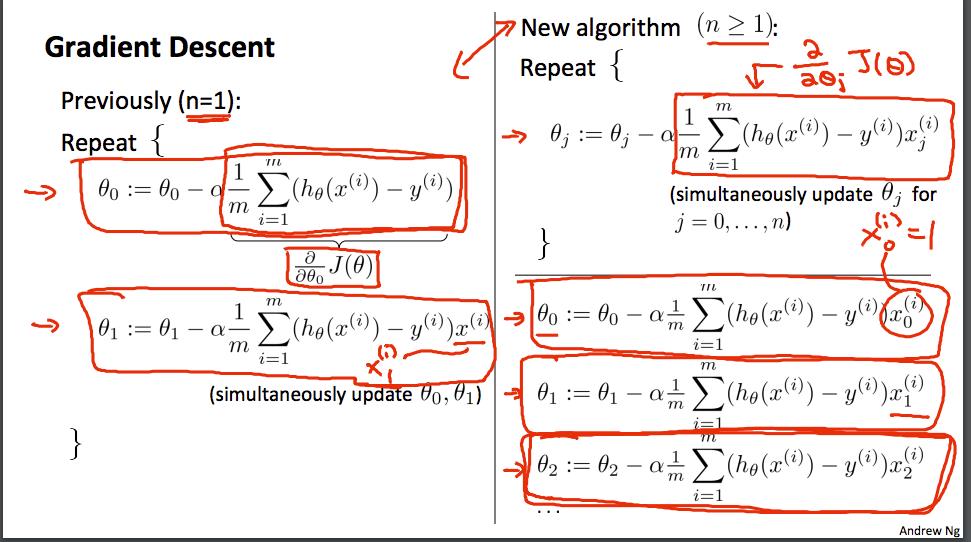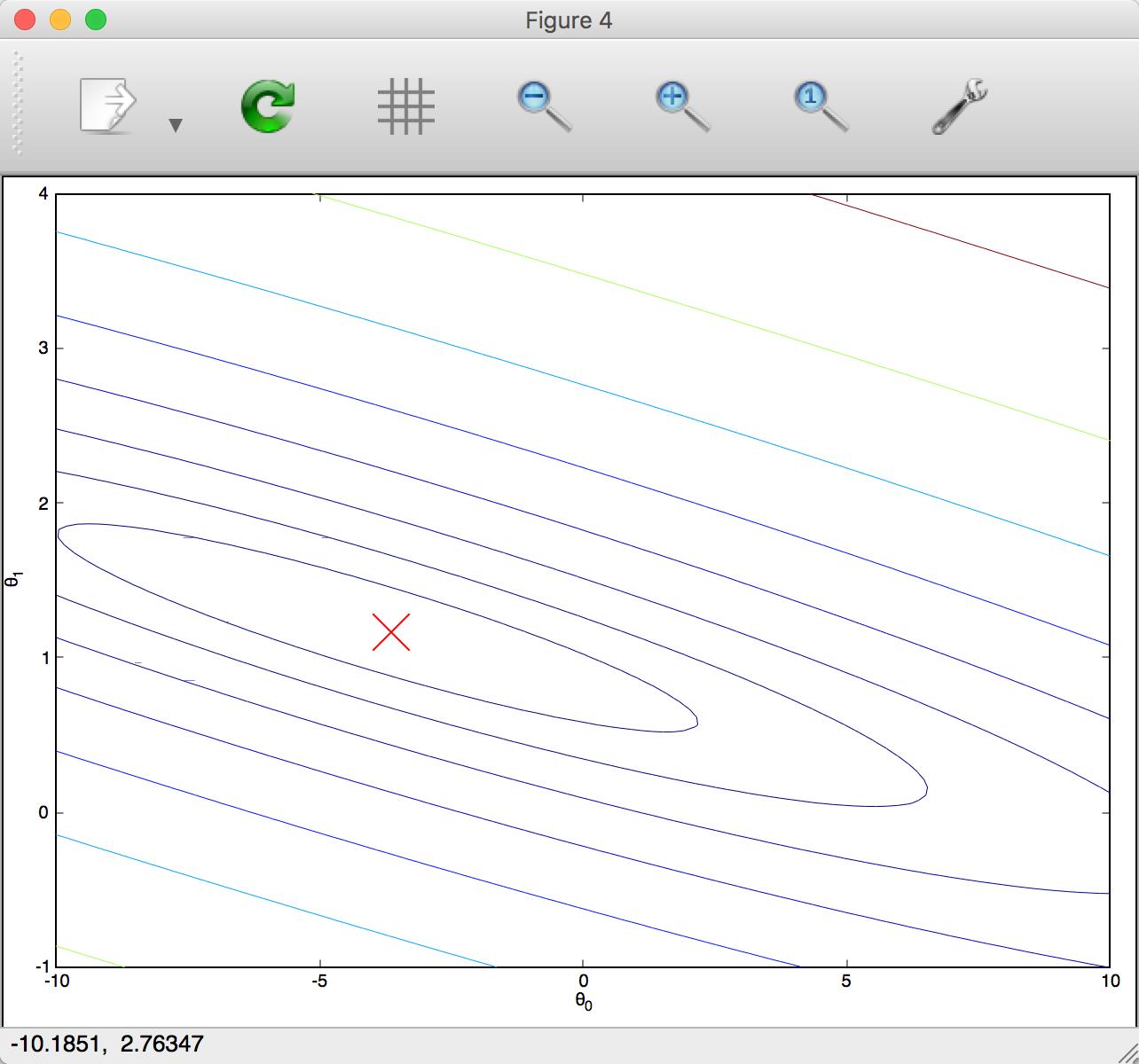Machine Learning - week 2 - 编程
tags:
篇首语:本文由小常识网(cha138.com)小编为大家整理,主要介绍了Machine Learning - week 2 - 编程相关的知识,希望对你有一定的参考价值。
3. % J = COMPUTECOST(X, y, theta) computes the cost of using theta as the
% parameter for linear regression to fit the data points in X and y
传入的参数的 size
size(X)
ans =
m n
octave:4> size(y)
ans =
m 1
octave:5> size(theta)
ans =
n 1
根据公式

hθ(x) = X * theta,size 为 m * 1。然后与 y 相减,再对所有元素取平方,之后求和。具体代码如下
function J = computeCost(X, y, theta) % Initialize some useful values m = length(y); % number of training examples J = 0; h = X * theta J = 1/(2*m) * sum( (h - y) .^ 2 ) end
gradientDescent

i 表示的行数,j 表示的是列数。每列表示一个 feature。xj(i) 表示第 j 列第 i 个。如何用向量表示这个乘法?
首先,弄清楚 ![]() 的意思。(对于每行 x 与对应的 y)预期值与真实值的差值 * 对应行的 x 的第 j 列个。j 与 θ 是对应的。下面是代码
的意思。(对于每行 x 与对应的 y)预期值与真实值的差值 * 对应行的 x 的第 j 列个。j 与 θ 是对应的。下面是代码
function [theta, J_history] = gradientDescent(X, y, theta, alpha, num_iters)
m = length(y); % number of training examples
n = columns(X);
J_history = zeros(num_iters, 1);
for iter = 1:num_iters
h = X * theta;
for j = 1:n
% 差值点乘
delta = alpha/m * sum( (h - y) .* X(:, j));
theta(j) = theta(j) - delta;
end
% Save the cost J in every iteration
J_history(iter) = computeCost(X, y, theta);
end
end
点乘,对应元素相乘
[1; 2; 3] .* [2; 2; 2] ans = 2 4 6
先弄清楚公式的意思,再寻找 Octave 中的表示方法。
等高线图怎么看
这是练习脚本生成的等高线。

同一条线、圆上的高度(y 值)是相同的,越密的地方变化越缓慢,反之变化越剧烈。
featureNormalize
% ====================== YOUR CODE HERE ====================== % Instructions: First, for each feature dimension, compute the mean % of the feature and subtract it from the dataset, % storing the mean value in mu. Next, compute the % standard deviation of each feature and divide % each feature by it\'s standard deviation, storing % the standard deviation in sigma. % % Note that X is a matrix where each column is a % feature and each row is an example. You need % to perform the normalization separately for % each feature. % % Hint: You might find the \'mean\' and \'std\' functions useful. % % Exclude x0 mu = mean(X); sigma = std(X); for i=1: size(X,2), X(:, i) = (X(:,i)-mu(i)) / sigma(i); end X_norm = X;
计算方式按照 Instructions 就可以,说一下怎么查找 Octave 的语法的。
排除 column:Octave exclude column
插入 column: Octave insert column
使用 for 循环完成 "divide each feature by it\'s standard deviation"
虽然这个答案提交是正确的,应该排除 X0 再放回去。
Normal Equation
inverse,表示为 -1
transpose,表示为 XT
% ====================== YOUR CODE HERE ====================== % Instructions: Complete the code to compute the closed form solution % to linear regression and put the result in theta. % % ---------------------- Sample Solution ---------------------- theta = inverse(X\' * X) * X\' * y;
以上是关于Machine Learning - week 2 - 编程的主要内容,如果未能解决你的问题,请参考以下文章